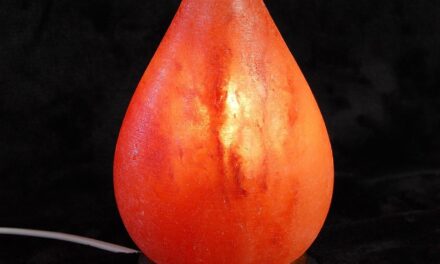Technological Innovations: New technologies and methods for water management and conservation explained
Ecological Research and Monitoring, and more
The Life Cycle of a Salty Lake: A Story of a Shrinking Giant
The Great Salt Lake, a vast expanse of shimmering water in the heart of Utah, is a unique ecosystem. Unlike most lakes, it is not fed by a single river but receives its water from a network of rivers and streams, including the Bear River, which flows through Box Elder County, home to towns like Brigham City and Tremonton. Over time, these rivers carry minerals, primarily salt, into the lake, giving it its distinctive name and unique qualities. Imagine the Great Salt Lake as a giant bathtub, but instead of clean water, it fills with a salty brine.
The Consequences of a Shrinking Lake
Unfortunately, this “bathtub” is shrinking, and its shrinking is a cause for great concern. The lake’s size fluctuates naturally with rainfall, but in recent years, the water levels have been declining dramatically, posing a threat to the delicate balance of this vital ecosystem.
The shrinking of the Great Salt Lake has significant consequences for the environment, economy, and human health:
- Environmental Impact: The Great Salt Lake is home to a diverse array of life, including brine shrimp, migratory birds, and various fish species. As the lake shrinks, their habitats are disrupted, endangering their populations and disrupting the food web. The shrinking lake also amplifies dust storms, creating respiratory problems for nearby residents.
- Economic Impact: The lake plays a vital role in the local economy, supporting industries like tourism, recreation, and mineral extraction. The shrinking lake threatens these industries, impacting livelihoods and local communities.
- Public Health Impact: As the lake recedes, dry lakebed dust, containing harmful pollutants, can be blown into the air, creating health risks, particularly for people with respiratory problems.
Why is the Great Salt Lake Shrinking?
The shrinking of the Great Salt Lake is a complex issue with multiple contributing factors:
- Climate Change: Rising temperatures and changing weather patterns are directly impacting the amount of rainfall and snowmelt that feeds the lake. Reduced precipitation leads to less water flowing into the lake.
- Increased Water Use: The growing population and expanding agricultural industry are putting increasing demands on water resources. As more water is diverted for human use, less is available for the lake.
What Can We Do?
Addressing the Great Salt Lake’s shrinking is a shared responsibility. Several strategies can help reverse this trend and restore the lake’s health:
- Water Conservation: Implementing water-saving measures in homes, businesses, and agriculture can significantly reduce the amount of water diverted from the lake.
- Sustainable Water Management: Developing more sustainable water management practices can ensure that the lake receives its fair share of water resources.
- Supporting Conservation Efforts: Supporting organizations and initiatives dedicated to protecting the Great Salt Lake can contribute to its restoration and preservation.
The future of the Great Salt Lake depends on our collective actions. By understanding the causes and consequences of its shrinking, we can work towards a sustainable solution that ensures the long-term health of this unique and vital ecosystem.
The Great Salt Lake: A Thirsty Giant
TL;DR: The Great Salt Lake is shrinking due to less rain and more water use. This is bad for the environment and our health. We need to use water wisely and find new ways to save it to keep the lake healthy.
The Life Cycle of a Salty Lake
The Great Salt Lake is like a giant bathtub, but instead of getting filled with clean water, it gets filled with salty water from rivers and streams. These rivers and streams collect water from the mountains, which get their water from rain and snow.
Box Elder County, with towns like Brigham City and Tremonton, is one of the places where rivers like the Bear River flow into the Great Salt Lake. This area also has lots of farms that need water to grow crops.
A Shrinking Giant
Over the past few years, the Great Salt Lake has been shrinking. This is because less water is flowing into it. There are two main reasons for this:
- Climate Change: The Earth is getting warmer, and this is changing the amount of rain and snow that falls in the mountains. Sometimes there is less rain, and sometimes the snow melts faster. This means less water flows into the rivers and the lake.
- Too Much Thirst: People in Utah use a lot of water for things like drinking, farming, and watering their yards. When there is less water to go around, the lake doesn’t get as much as it needs.
The Consequences of a Shrinking Lake
A shrinking Great Salt Lake is bad news for everyone:
- The Environment: The lake is home to many birds, fish, and other animals. When it shrinks, their homes disappear, and they can’t survive.
- Our Health: When the lake shrinks, the salt dust from its dry bottom gets blown into the air. This can cause breathing problems for people.
Solving the Water Crisis
We need to act now to save the Great Salt Lake! Here are some ideas:
Saving Water
- Use less water: We can all do our part by using less water when we shower, wash dishes, and water our yards.
- Smart sprinklers: New types of sprinklers use less water to keep our yards green.
- Fix leaks: A leaky faucet or pipe can waste a lot of water.
New Water Technologies
- Desalination: This technology can turn salty water into fresh water. It can be expensive, but it could help make more water available for the lake.
- Water recycling: We can use water that has already been used for things like washing clothes and taking showers. This can help conserve water.
Ecological Research and Monitoring
- The Active Climate Rescue Initiative: Organizations like Climate Rescue are working to find solutions to the Great Basin water supply shortages. They are researching ways to restore the natural water cycle and make sure there’s enough water for everyone.
- Monitoring the lake: Scientists are constantly monitoring the Great Salt Lake to understand what is happening and how to help it.
Summary
The Great Salt Lake is facing a water crisis caused by climate change and overuse. This is hurting the environment and our health. We need to work together to save the lake by conserving water, using new technologies, and supporting organizations like the Active Climate Rescue Initiative. By taking action, we can make sure that this important part of our world stays healthy for generations to come.
More on Technological Innovations: New technologies and methods for water management and conservation…
- ## SEO Keywords related to Technological Innovations: New technologies and methods for water management and conservation:
- water management technology
- water conservation technology
- innovative water solutions
- smart water management
- water efficiency technologies
- water scarcity solutions
- drought mitigation technology
- water treatment innovations
- desalination technology
- rainwater harvesting systems
- water sensor networks
- irrigation technology
- precision irrigation
- water leak detection
- water reuse and recycling
- water footprint analysis
- sustainable water practices
- water data analytics
- water resource modeling
- water security technology
- green infrastructure for water management
- artificial intelligence for water management
- ## SEO Keywords related to Ecological Research and Monitoring:
- ecological research
- environmental monitoring
- ecosystem health assessment
- biodiversity monitoring
- wildlife conservation research
- habitat restoration research
- climate change impact on ecosystems
- water quality monitoring
- air quality monitoring
- soil health assessment
- ecological modeling
- remote sensing for ecology
- citizen science for ecology
- conservation biology
- ecological restoration
- environmental impact assessment
- ecological data analysis
- species diversity assessment
- ecosystem services valuation
- ecological forecasting
- wildlife tracking technology
- environmental DNA analysis
- bioacoustics monitoring
- ecological field research
- scientific data management in ecology
- conservation genetics
- restoration ecology
- ## SEO Keywords Combining Both:
- technological solutions for ecological research
- using technology for environmental monitoring
- AI for ecological conservation
- remote sensing for water management
- big data in water and ecology
- environmental sustainability technologies
- integrated water and ecological management
- ecological restoration using technology
- sustainable water management for ecosystem health
- climate change adaptation for water and ecology
- water and ecological security











